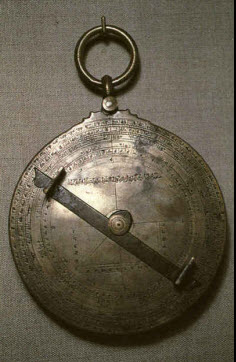Astronomy & Mathematics
The mathematics skills of Andalusians have been recognized and acted as a catalyst in exploring other fields. Al-Bitruji, known in Europe as Alpetragius, developed a theory of the movement of stars described in The Book of Form. With the use of mathematics, the field of astronomy boomed. In Cordoba, al-Zarqali prepared astronomical charts called the Toledan Tables, corrected Ptolemy's estimate of the length of the Mediterranean Sea, built, and improved on the astrolabe, a tool with hundreds of uses in astronomy, navigation, surveying and timekeeping.
|
“Finally it was through Spanish channels that the Latin West found its oriental inspiration in astronomy and astrology. The leading Muslim astronomical works were translated in Spain into Latin, and the Alfonsine tables compiled under the aegis of Alfonso X in the 13th century were but a development of Arab astronomy.”
-Philip K.Hitti, a scholar & authority on Arab History and Islam. |

